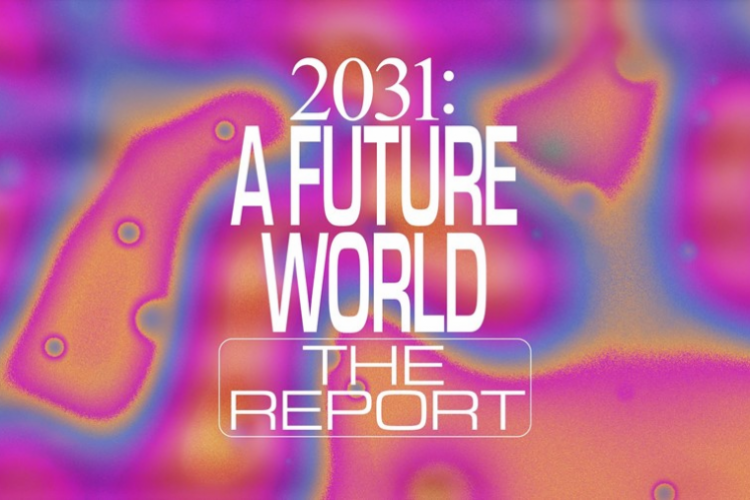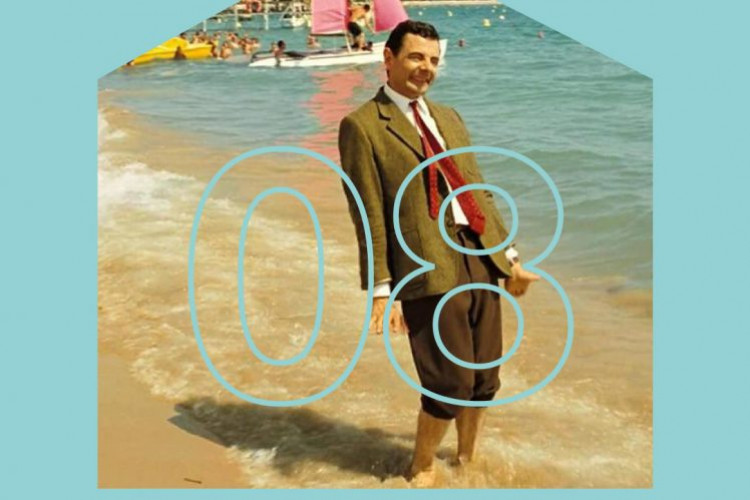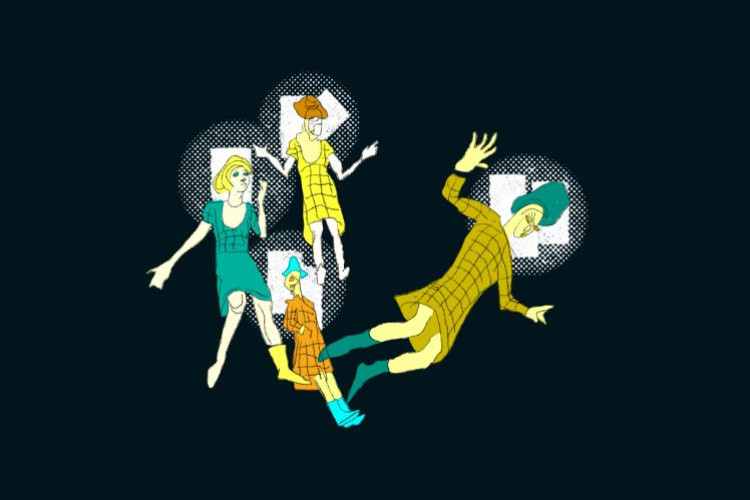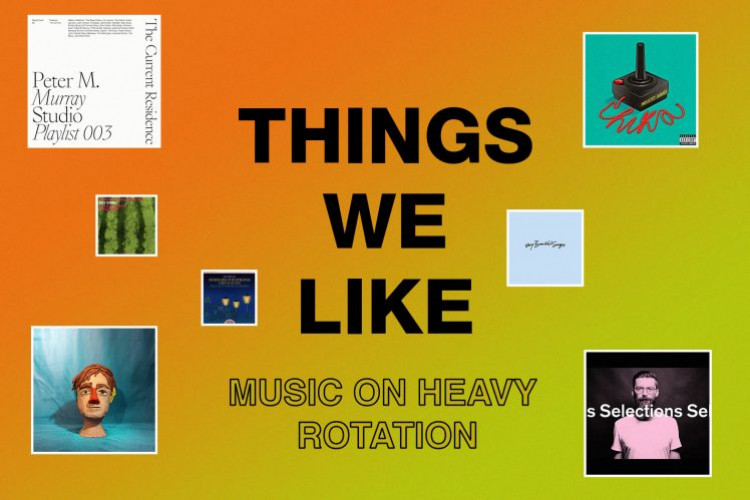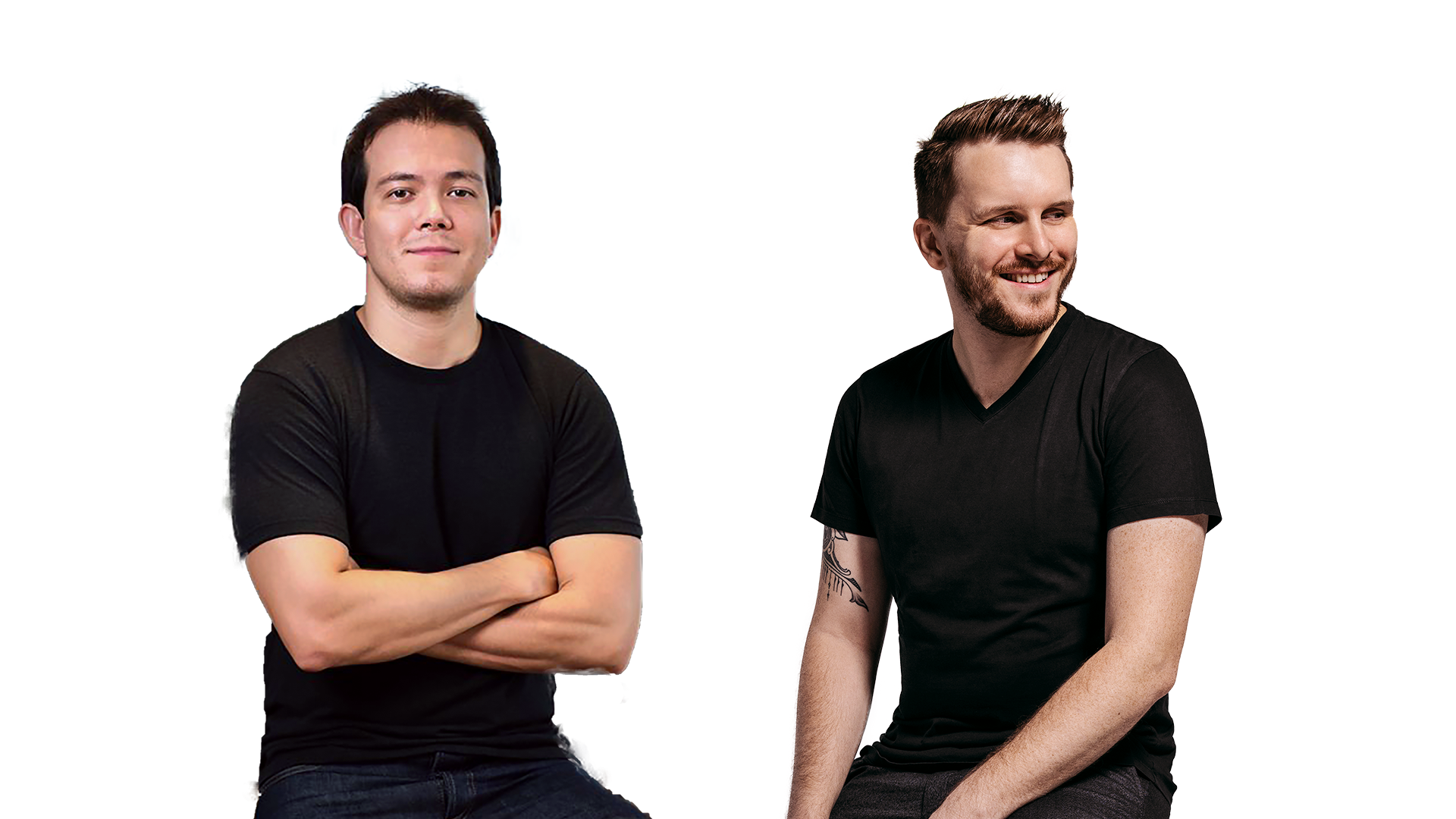
The Future of Our Air with Nafas
We talked with Nafas CEO and co-founder Nathan Roestandy to discuss the importance of understanding the impact of air pollution and their focus on data.
Words by Ghina Sabrina
Amid growing concerns surrounding the state of global climate, the topic of air pollution still lacked the attention it deserves. While the effects of air pollution have long been proven to negatively affect our climate, it also poses a huge impact on our public health with air pollution contributing to 6.7 million deaths in 2019 (State of Global Air). In Indonesia, a start-up aims to help the public understand the impact air quality have on their livelihood. Co-founded by Piotr Jakubowski and Nathan Roestandy, Nafas has built an app and a complex air monitoring system in which Indonesians could adjust their lifestyle based on their surroundings. We had the chance to talk to Nathan about Nafas and their focus on leveraging data to enable a better quality of life.
Could you tell us about the beginning of Nafas?
Nafas originally began as a personal experiment back in 2015. I was curious to know what the air pollution was like in Jakarta after having travelled to China very often in the past 10-13 years. I witnessed first-hand how bad air pollution was in all the major cities in China. Basically from the start of the height of air pollution in China, and then there was a viral movement on the internet, where concerned citizens were campaigning against demanding government action towards curbing air pollution, all the way until the government actually declaring war on pollution and embarked on this massive campaign towards retooling the economy. Having witnessed that trend in China, I was curious to see how bad air pollution was in Indonesia. So I started documenting air pollution using a portable sensor on the back of a Gojek bike. I used to take Gojeks almost every day, up to 4 times daily and throughout that process discovered that even in 2015, air pollution levels were already very high, about three and a half times the WHO standard. If you adjust to the new WHO standard then that number goes up to four and a half times. So if you fast forward 5 and 6 years later today, that number is close to six to ten times.
So that’s the origin of Nafas, which began as a personal experiment ran by myself on the back of a Gojek Bike. From there, I realised two things, one, the air pollution was already very high and two, awareness was extremely low, basically non-existent. I think awareness is typically tied to the availability of data, if you have no data to measure and quantify, the problem appears less real, it becomes more abstract. So the first idea of launching Nafas was really to provide a basic public utility to urban citizens of Jabodetabek, which is access to real-time accurate air quality information, like google maps but for air pollution.
Compared to other environmental causes, the air pollution issue hasn’t gained as much attention. What do you think caused the gap in public perception?
It is a climate problem, but it’s more appropriately a public health problem.
I think as a general macro trend, climate and environmental topics are just more popular, especially global warming and climate change, but I think what people often don’t realise is that air pollution is also a result of that. And I think the misconception is the fact that air pollution is not really a climate problem. It is a climate problem, but it’s more appropriately a public health problem. It shares similar causes and solutions, if you can fix one then you can fix the other as well.
Generally speaking, aside from air pollution being a less popular trend, I think it’s also the fact that only in the past, I would say 5-10 years, a lot more scientific discoveries have been made on just investigating the severe health consequences of air pollution, versus global warming that has just been growing over a longer period of time.
Air pollution and climate change are two sides of the same coin. With Nafas, what are the ways in which you can leverage data to enable a better quality of life?
By providing access to data, it helps funnel a lot of research studies for different institutions. We work with different universities, University of Chicago, University of Indonesia, some other local universities and other institutions as well. It really helps with the various research and studies that they’re doing. And I think data, once you have enough of it, can really be practical information for just everyday people, in terms of managing their exposure to air pollution. Especially if you like to run, or you have asthma, or you’re pregnant or have young children, or you live with elderly people, real-time air quality data can help you navigate day to day.
Then having access to real-time and hyperlocal data. And I think hyperlocal data is really important because you can’t simply say that “Okay, the air quality of Jakarta is this level”. There are so many different factors. In North Jakarta, the air quality can be quite good, and in South Jakarta, it can be unhealthy. So there’s this large variation, it’s like living in a seasonal country where you always check the weather app. So I think data can enable research efforts, scientific studies, and on a more practical level, it can help people with just everyday activities outdoors.
View this post on Instagram
As an app, generating adoption is also a challenge in itself. What kind of strategies does Nafas have to increase the rate of adoption?
We want to make air quality more of a fun topic, in the sense that air pollution is a very technical and scientific subject, that’s just quite boring. So we want to make it as fun and as interactive as possible, and I think that’s the key towards spreading air quality awareness, just by translating all of these technical facts into something that everybody can understand.
Aside from that, there has recently been a lot more attention on air pollution. In National Geographic in March, there was an entire section as in a few other major publications. Air pollution is gaining more attraction, increasing in popularity, so we also capitalize on a lot of these external trends as well. In Indonesia, it’s also becoming an increasingly popular topic. Just last week there was this huge lawsuit that was won by the public against the government. So these are sort of different external events that we try to capitalize on.
We want to make air quality more of a fun topic.
But in general, what we want to do is to make air quality a very fun and interesting topic to understand. And I think there’s also a strong social component to it because when you talk about air pollution, the ones that suffer the most are the less fortunate ones, that don’t have the resources, or don’t have the knowledge. Maybe you and I can still afford air purifiers in our houses, but for the majority of the population, it’s a basic human right that’s being stripped away from them. So there’s a very strong social narrative that we try to promote. Not in an aggressive way, but more to highlight that there is a very strong social mission towards what we’re doing. And I think if you want to incentivize the government and politicians to implement meaningful change, then you need to make it a popular enough topic. If it’s a sexier topic, then politicians and the government will start to pay more attention to it.
If you look at the experiences of other countries, it generally comes from the public. And I think it’s the responsibility of the more fortunate members of the society, the more educated members of society. We have the resources, we have the knowledge, and we have the voice, that can really bring light to this problem, and serve as a catalyst towards greater change.
Data from Nafas were able to dispel some myths in relation to air pollution such as morning time is the best time to exercise. Are there any other insights that we should know?
Yes, there are a few misconceptions. The primary purpose of, for example, exercising, whether you’re going out for a run, for a swim, or going to the gym, is that you basically want to improve your health. But at a certain level of air pollution, any gains that you get from any sort of outdoor sports is basically zero, it’s negated by just the harmful effects of breathing in all that air pollution. Plus when you’re exercising you’re also breathing in much more air, so your air pollution intake increases exponentially, and at high levels anything more than half an hour you’re actually doing more harm than good.
In Jakarta, typically the ritual is that I go for a run in the morning and I walk my dog. In a lot of houses, they open up the window and let the air in, this is a very common practice. But in fact, that’s actually the worst time to be doing that, and you’re actually better off doing it during rush hour, or sometime in the afternoon when air pollution levels are much lower.
View this post on Instagram
Another misconception is the fact that people assume that the air quality indoors is much better than it is outdoors. For example, today when I landed, you can see a very thick smoke as you land in Soekarno Hatta, and I immediately open the Nafas app, and surely our sensor in Cengkareng has a reading of 165 AQI (Unhealthy). So people assume that “okay it’s really bad outside but at least I’m inside and safe.” In fact, indoor air pollution is sometimes worse than it is outside. There are multiple factors that contribute to this, mostly related to buildings not properly sealed here, because we don’t have to deal with harsh winters, usually buildings are not properly sealed, and we also ventilate. A lot of big buildings ventilate outside air, they’re bringing outside air and they circle it back. So outdoor air basically goes inside, and sometimes the ventilation indoors is also not very good.
There are also other sources of air pollution indoors, such as cooking, there are a lot of activities that actually increase pollution indoors. So that’s another misconception, is the fact that you’re not actually safe inside, in fact, you’re actually maybe worse off inside than you are outside.
Another misconception is typically people associate air pollution with long term illnesses. As humans, long term consequences are just less urgent, versus short term consequences that are dealt with much more urgency. But there was a study that came out from the Department of Public Health at the University of Indonesia conducted by Professor Budi Haryanto, PhD, he found that 60% of all hospital cases in Jakarta can be attributed to air pollution. So this is something as simple as triggering an asthma attack or worsening asthma condition, throat irritation, bronchitis, pneumonia. So it’s not just a long term condition, but there are also short term consequences. It also impacts brain development for young children, especially for pregnant women as well as the elderly. So there are a lot of short term effects that people just have no idea about. So those are the misconceptions.
If you want to incentivize the government and politicians to implement meaningful change, then you need to make it a popular enough topic.
What are Nafas’ efforts in further advocating this cause apart from the app itself?
Currently, we have formal partnerships with a few different organizations. University Indonesia is one of them, we work with the department of public health, and we provide data to help them advance their study. We also work with the University of Chicago, which through the Air Quality Life Index Program, we help support with data to help them build more insightful economic models that help establish implication or correlation between air pollution exposure, general health, and life expectancy. We also work with other NGOs, and different types of institutions, and similarly those also aim towards advancing research studies.
So obviously there’s a whole long term goal of more people being aware of air pollution and the more people that care about air pollution, then this movement will serve as a very powerful lobby towards influencing the government. And generating this sort of critical mass of people caring about this issue can help accelerate government action. But even before that, what we plan on doing is with the more sensors we install in different cities, as I mentioned before that air pollution is very hyperlocal, so one area can be different from another area. Our goal is that once we have enough sensors then we can cover a very dense area of a particular city, then we can start utilizing our data to help understand what is the effect of your personal environment on your general health.
If you look at the use of healthcare, it’s moving towards a more holistic and preventable healthcare system. It’s much cheaper to prevent something than to treat something. So the idea of preventable healthcare is that you need a lot of data. So once we have enough data, we can basically build profiles around different users that are living in different areas and what they’re exposed to. And it’s not just outdoors as well, we have products that are targeted for the indoor environment as well. So the idea is that we’ll be able to help healthcare companies, and it’s not just private healthcare but even public healthcare companies, and helping the government towards understanding the risks of air pollution that’s specific to certain individuals that live in certain areas in the city. So that’s something that’s currently missing, simply because there isn’t any data or any infrastructure to provide that data. So in Nafas, one of our goals is to provide and to build the infrastructure necessary to provide insights into the personal environment and how that affects someone’s health, and the risks of them developing certain health conditions in the future.
As of now, Nafas has spread air quality sensors in Greater Jakarta, Yogyakarta and Bali. Could you tell us more about your plans for expansion? Which areas are you focusing on next?
So by the end of the year, we plan on expanding into all the major cities. So Bandung, Surabaya, Medan, Semarang, Sulawesi, by the end of the year our plan is to expand into all the major cities all over Indonesia.
Jakarta was the most obvious one, simply because I’m from Jakarta and it’s also the biggest city in Indonesia, it’s the most impactful. I think Jakarta makes a really good pilot, simply because of its huge population.
Dengan hadirnya sensor nafas di dua kota baru; Bandung dan Surabaya, kami resmi merubah nama dari nafasjkt menjadi @nafasidn — harapan ke depannya kami bisa semakin memperluas jaringan sensor di kota-kota lain dan menjadi aplikasi pemantau kualitas udara terbesar di Indonesia! pic.twitter.com/bO6euKRU3i
— nafas – Indonesia air quality app (@nafasidn) October 11, 2021
What advice would you give to Nafas users, or the general public, on how to protect themselves from air pollution?
I think it’s useful to think of it as, kind of like ‘menabung’. ‘Menabung’ for a future where you’re healthier, and you can enjoy a higher quality of life, you spend less on health costs. So it’s just about being smart and reducing your exposure day by day. So you can look at it like a long term investment, like the way you approach health insurance, by making smart decisions today, you can save a lot of money on future medical expenses related to air pollution exposure. So what we’re building is not only a data platform, but we’re also building purification, filtration, and modern solutions for indoor areas as well, and we’re trying to do this at scale, meaning we want to try to do this as affordable as possible. So if you think about restaurants, coffee shops, gyms, shopping malls, we want to turn all of these places into clean air zones. And the idea is that once we have enough of these clean air zones location, then we spend so much of our time indoors, especially now with Covid, that if we can say “hey through the Nafas ecosystem, throughout the day at least 50% of the day you’re breathing in healthier air.” And I think once we can do this at scale, then that’s when we start to produce a huge impact. Because think about if you spend 90% of your time indoors, and you’re breathing in, let’s say, an average air quality that’s unhealthy, if you can bring that down to even a moderate level, that’s already a huge improvement. So that’s one of our goals as well.
We are currently gathering perspectives about the future of our latest book “Open Column 3”. Do you think civil lawsuits such as the one we’ve mentioned are effective to battle the war against air pollution?
Yes, I think so, I think that anything that gets the attention of the public can really help us with defeating air pollution. And again this is the trend that you see in other countries as well, it’s a people’s movement, if enough people care about it then the government will do something about it.
View this post on Instagram
And lastly, what can we expect from this movement (and Nafas’ actions) in the future?
So our goal is to support different stakeholders. We provide solutions to the public, we help with public and private organisations, but we also want to assist the government in developing programs, understanding the sources of air pollution, and basically leveraging our platform towards helping the government in shaping policies and implementing certain programs. Because I think for a program to be effective you need very concrete and very accurate data or information. We’re not here to point fingers, I think air pollution is not just a problem that exists here, it’s a problem that exists everywhere. Even developed countries such as Europe, Western Europe, North America, they have this problem as well. We just want to help different stakeholders, including the government.





